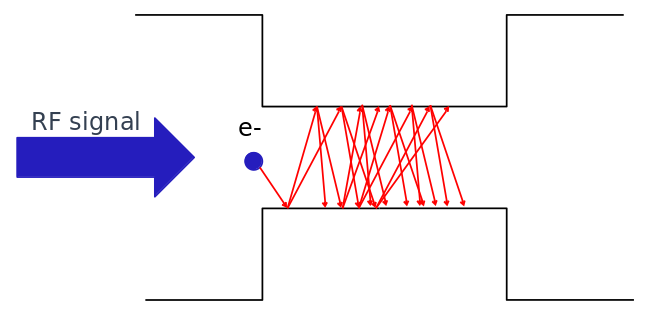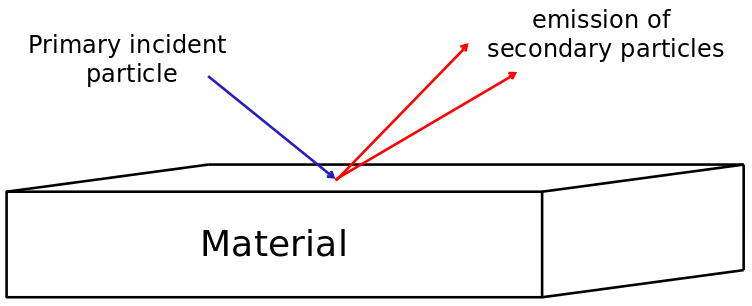The trend in space telecommunications is to have an increased number of users and/or to have an increased data rate for multimedia purposes. Consequently, there is a need for a constantly increasing RF power downstream of the High Power amplifier within the RF payload of a satellite. In that context, all concerned equipment must handle higher RF power in a vacuum which means that they must be designed while considering the risks of the Multipactor effect. This parasitic phenomenon occurs inside high RF power components.
A high RF power signal is transmitted through, for instance, waveguide components. Among these components, filters are used to clean the frequency spectrum. The filters are used to prevent any perturbation with RF signals, provided by other structures, considering the payload or other communication systems at the space communications level. A geometric structure, such as an iris, is necessary to design waveguide filters. If no care is given to the Multipactor risks, dimensions of the geometric structure and materials properties may cause this phenomenon to occur.

The Multipactor effect is a physical phenomenon. Electrons move due to the action of the RF electric field inside waveguides. Those electrons can have enough energy to trigger the release of the Secondary Electron Emission (SEE) through collisions with the walls of the RF component. The number of electrons torn off the wall depends on various factors such as the Secondary Electron Emission (SEE) material property of the RF components. This may lead to an exponential cascade of electrons called the Multipactor effect.

The Multipactor effect may present a problem for the waveguide, such as distortion of the RF signal and/or damage to the walls of the RF components.